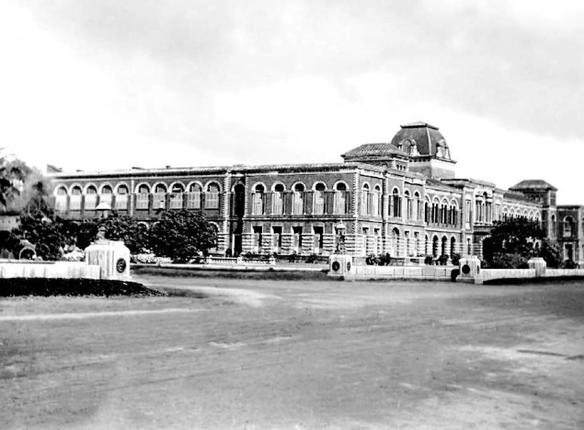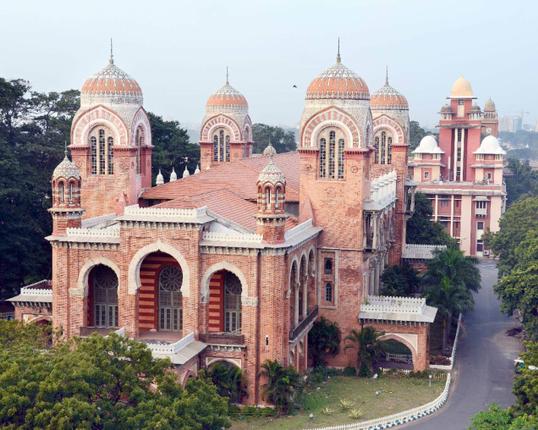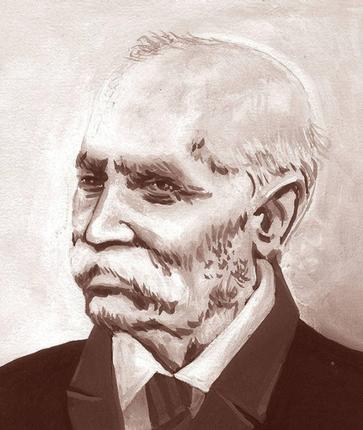Robert Fellowes Chisholm’s spirit lives on in the iconic buildings he designed
In the death centenary of architect Robert Fellowes Chisholm, it’s only fitting that we “remember the man who changed the skyline of Beach Road,” says writer and historian Sriram V. at his tribute talk on Chisholm, ‘The Indo-Saracenic Man’, as part of Madras Week celebrations. At a time when the predominant architecture was either Greek-inspired or in military-garrison method with minimal ornamentation, Chisholm is credited with blending indigenous building styles with classical British staples to popularise an architectural language that came to be called ‘Indo-Saracenic’. It defines colonial Madras to date.
Born to artist parents in 1840 in London, Chisholm came to India as a special engineer to the Government of Bengal in 1859, married the very next year and had six children in quick succession. In 1863, as part of the Puri division, Chisholm submitted drawings for an architectural competition the Government of Madras was conducting for its proposed university and senate house, which were to compete with the grandeur of Bombay’s Gothic architecture. Among 17 nationwide entries, Chisholm’s’ won. The new Governor of Madras, Lord Napier, got Chisholm immediately transferred as ‘consulting architect’ and the two became thick friends.

While the university (the present-day Presidency College) was completed by 1867, it was discovered years later that Chisholm had lifted this Italianate design from one reserved for a British hospital in Malta. “The arch of moulded bricks around the windows, an element Chisholm faithfully added to every building, marks the College as his,” says Sriram. Chisholm went on to build the Lawrence School, Lovedale, and the Nilgiris library, once again with similarly plagiarised designs, notes Sriram. Later, he built Madras’ PWD building, reminiscent of Scottish-baronial architecture, specially commissioned by Napier to hide the Chepauk Palace that Napier felt irritatingly reminded him of a time before British rule. A clue to Chisholm’s future direction in architecture though, lies in the tower he built to connect the Humayun and Khalsa Mahal wings of the Chepauk Palace. It seems inspired by the designs in Charminar, thus suggesting that Chisholm was finally acknowledging and adopting the beauty of native architecture.

In 1872, Napier sent Chisholm to visit the Thirumalai Nayak Mahal, an event that changed his life. “It was love at first sight,” says Sriram. Chisholm wrote extensively of the Mahal’s ornamentation, went on to restore it, returned to Madras, and reworked his designs for the Senate with numerous ‘Hindoo’ elements, winged gods and angels, columns typical of the Mahal, and in nine years, completed the building considered his best ever work. Next, Chisholm visited the Maharaja of Kerala to design a museum there in honour of Napier and fell in love all over again with the Kerala architectural style, its sloping Travancore roofs and Mangalore tiles. Madras’ General Post Office, was to incorporate much from Kerala, in its three-storeyed building whose central hall was only one storey that stretched upward to the iconic sloping roof. “The restoration of the building sadly retains little of Chisholm,” notes Sriram.
Chisholm went on to hone his brand of the Indo-Saracenic with Madras’ Victoria Public Hall, P. Orr and Sons office, a tower of the Central Station and eventually grew “above himself,” especially in matters of accounts corruption. In 1886, he resigned, and was snapped up by the Maharaja of Baroda, where he completed work on the Lakshmi Vilas Palace, the Baroda Museum, the Makarpura Palace, law courts and a library. “All along, he was building confidence to build the Sayajirao University of Baroda, with its 74-feet diameter dome, which was the biggest free-standing dome built by the British.”
For this, he was honoured by the Royal Institute of British Architects, where he was a Fellow and lectured often. Once Chisholm returned to England in 1901, he designed the First Church of Christ, Scientist in 1907 in Sloane London, which is today a concert hall, but bears a tower distinctly similar to Chisholm’s towers at the Senate House and Chepauk, observes Sriram.
Chisholm died in London on May 28, 1915, but Chennai’s skyline still remembers him well.
source: http://www.thehindu.com / The Hindu / Home> News> Cities> Chennai> Madras 375 / by Esther Elias / Chennai – August 20th, 2014
